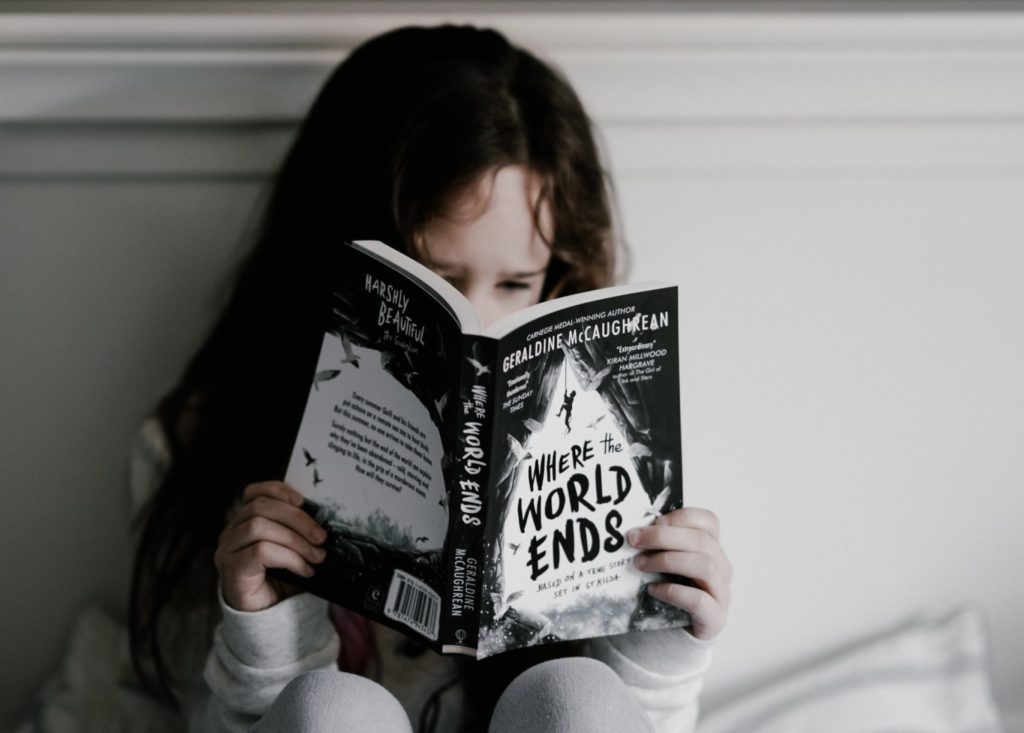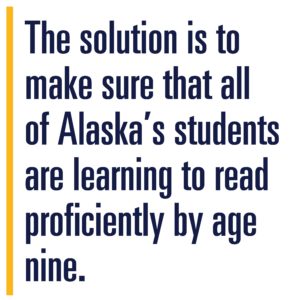
Early in 2020, legislation was announced again to address the third-grade literacy crisis facing Alaskan children. Year after year, the problem has been discussed and legislation with viable solutions proposed—only to go nowhere. Finally, in 2020, the ember caught fire. The proposed reforms resulted in 15 committee hearings in both legislative bodies over less than two-and-a-half months. That’s rapid-fire action for the legislature.
But then in March, COVID-19 appeared on the scene, legislators scuttled nearly every other legislative priority except those directly responding to the pandemic, then jumped on planes for home. Now it seems that this important policy has almost been forgotten. It is imperative that this issue is resurrected, so that Alaska’s children are taught to read, particularly as they catch-up from an extremely unconventional year due to the pandemic.
By the end of third grade, students must make the transition from learning to read to reading to learn. If they don’t, evidence shows that they will struggle with doing their coursework going forward. Each year, as the grade level demands go up, students who are not proficient readers tend to fall further behind and become outsiders inside the classroom. In fact, by fourth grade, if students are not proficient readers, half of the curriculum at higher grade levels will be incomprehensible to them. Additionally, studies have found that 88 percent of students who fail to complete high school were students who struggled to read in third grade.
Statistics for literacy among Alaska’s children are dismal, and most likely worse after months of unconventional or even nonexistent learning. Unfortunately, no standardized tests have been administered in 2020, so we don’t know how students are currently faring. We do know, however, that as of 2019, Alaska had arguably the worst student outcomes in the nation in the fundamental task of teaching children to read by the all-important age of nine.
The most recent national test results published in October 2019 showed Alaska lagging dramatically behind in fourth-grade reading. Alaska’s public schools scored 51st (dead last) in fourth-grade reading for both upper-and-middle-income and low-income students, behind every other state and the District of Columbia. In fact, Alaskan students have been ranked in the bottom 10 states in fourth-grade reading scores for over a decade.
 While some have made arguments that these scores don’t tell the whole story, Alaska Policy Forum has addressed those concerns multiple times. We have addressed myths and considered some of the other arguments regarding poor scores, including pre-K programs, diversity, rural vs. urban schools, and K–12 spending. However, Alaska’s children aren’t learning to read at the level they need by age nine, regardless of where in the state they are located, how much money is being spent on them, or if they are a minority. The solution, then, is to make sure that all of Alaska’s students are learning to read proficiently by age nine.
While some have made arguments that these scores don’t tell the whole story, Alaska Policy Forum has addressed those concerns multiple times. We have addressed myths and considered some of the other arguments regarding poor scores, including pre-K programs, diversity, rural vs. urban schools, and K–12 spending. However, Alaska’s children aren’t learning to read at the level they need by age nine, regardless of where in the state they are located, how much money is being spent on them, or if they are a minority. The solution, then, is to make sure that all of Alaska’s students are learning to read proficiently by age nine.
Other states that historically performed poorly have implemented their own early literacy reforms, with resounding success. Mississippi, for example, went from one of the worst performing states in the country in 2013 to third in the nation for low-income fourth-grade reading scores in 2019. Florida, which pioneered reading reforms that required more intensive literacy interventions, ranked 28th in low-income fourth-grade reading scores in 2003. By 2009, the state had jumped to first in the U.S. and has stayed there for the past decade.
Rather than reinvent the wheel, Alaska can simply adopt the reading model pioneered by Florida and used with success by many other states, including Mississippi. This would include a multi-faceted early childhood literacy program that strongly incentivizes identification of, and targets intervention for, poor readers as early as kindergarten, and focuses on staff training in science-based reading instruction. K–3 reforms which implement programs similar to Florida’s will address a major problem facing Alaska’s students and give them a chance to succeed.